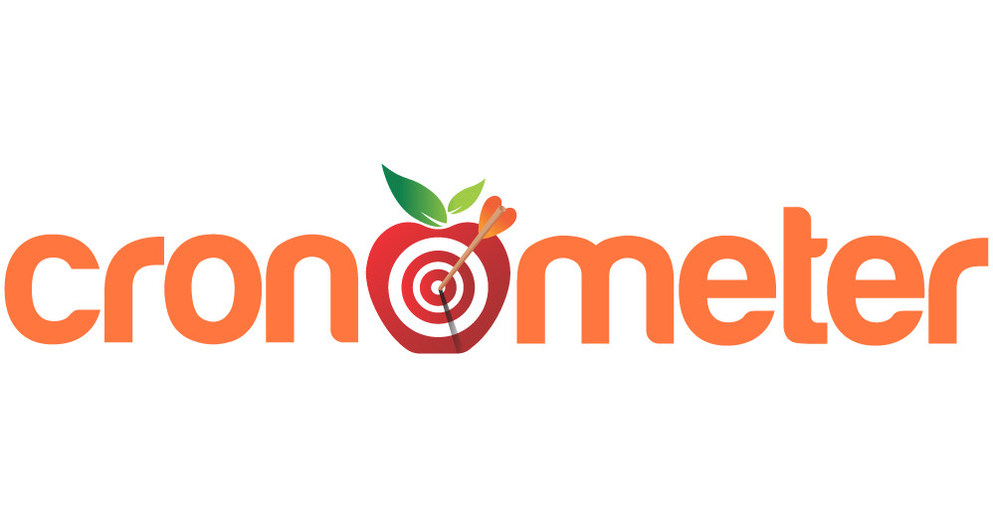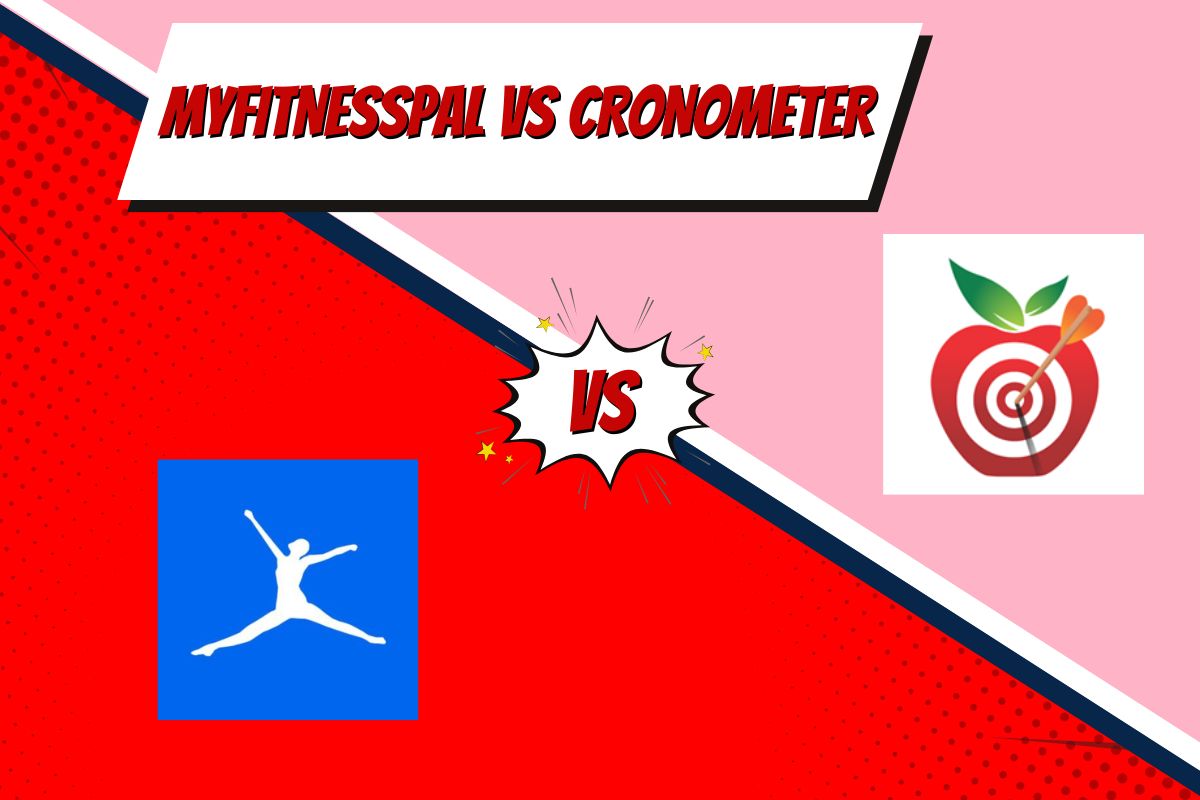Fitness trackers and apps have become an essential aspect of daily life for countless individuals worldwide.
Whether your goal is shedding pounds, building muscle, or maintaining your fitness level, these apps serve as invaluable resources for monitoring your progress and staying motivated.
But which fitness app best suits your needs? In this article, I’ll explore two popular free options: MyFitnessPal (MFP) and Cronometer. Let’s get started with the comparison –
What Is MyFitnessPal?

MyFitnessPal is a calorie-tracking and weight-loss app. It can be used to track nutrition, exercise, and body measurements. The app also has a barcode scanner that allows you to quickly add food items without typing them in manually.
MyFitnessPal is available for both Android and iOS devices
What Is Cronometer?
 Cronometer is a free nutrition app for iPhone and Android, created by a software engineer and a registered dietitian. Launched in 2011, it remains popular due to its simple interface, extensive food database (over 300,000 items), and user-added recipes. The app helps track daily or weekly eating habits, ensuring meals align with your goals.
Cronometer is a free nutrition app for iPhone and Android, created by a software engineer and a registered dietitian. Launched in 2011, it remains popular due to its simple interface, extensive food database (over 300,000 items), and user-added recipes. The app helps track daily or weekly eating habits, ensuring meals align with your goals.
It also supports specific diets like keto or veganism, monitoring potential nutritional deficiencies or excesses. Cronometer avoids overwhelming users with options, unlike MyFitnessPal, when exploring different diet types.
MyFitnessPal vs Cronometer: Comparing Key Features
- Both MyFitnessPal and Cronometer offer customizable calorie intake and macronutrient ratio goals.
- Barcode scanning for easy food logging is available in both apps
- MyFitnessPal has a larger food database (over 11 million entries), while Cronometer offers highly accurate nutritional information
- MyFitnessPal provides extensive exercise tracking and syncs with popular fitness apps/devices, whereas Cronometer focuses on comprehensive micronutrient intake tracking
- MyFitnessPal has a more active user community for support and advice, while Cronometer delivers detailed nutritional analysis
- Both apps have premium subscriptions that unlock additional features
- MyFitnessPal is more focused on weight loss and calorie counting, while Cronometer is more health-oriented and prioritizes overall wellness
MyFitnessPal vs Cronometer: User Interface and Experience
If you’re looking for an app that is easy to use and has a great user interface, MyFitnessPal is the way to go. The app has been around since 2005 and has refined its interface.
It also has a huge community of active users on the forum, which makes it easier for you to find answers if you’re having any problems with the app or want some tips on how others use it.
Cronometer’s website isn’t as intuitive as MyFitnessPal’s site; however, this might be because Cronometer was created with an emphasis on nutrition rather than fitness.
Still, if you want something more engaging than just entering food into your diary every day (which isn’t bad either), then Cronometer might be worth checking out!
MyFitnessPal vs Cronometer: Meal Planning and Recipe Features
One of the most important features of any fitness app is its ability to help you plan your meals and track your progress. If you’re looking for an app that can help you track what you’re eating, MyFitnessPal has some serious advantages over Cronometer.
Both apps offer a large food database with nutritional information on thousands of foods worldwide—but MyFitnessPal has a much larger selection than Cronometer.
It also offers more advanced features for meal planning and recipe creation, allowing users to enter custom recipes or create their own custom meals based on specific nutrients they want to track (like calories or protein).
Cronometer does have one ace up its sleeve: it supports importing recipes from other sites via the “Import Recipe” button. This feature makes it easy if you’ve already created recipes elsewhere online—you can copy/paste them into Cronometer without having to retype anything manually!
However, this feature is not as streamlined as MyFitnessPal’s recipe import functionality.
MyFitnessPal vs Cronometer: Goal Setting and Progress Tracking

MyFitnessPal and Cronometer allow you to set goals for weight loss, weight gain, or maintaining your current weight. MyFitnessPal also allows you to set a custom goal for your target weight.
For example, if you want to lose 10 pounds in 6 weeks but not more than 20 pounds total over the course of 12 months (i.e., 1 pound per week), then this would be considered a custom goal in MyFitnessPal.
Cronometer does not offer any option for customizing your goal beyond choosing between weight loss, gain, or maintenance; however, it does provide a large variety of preset plans that can help users achieve their goals (such as “lose 2-3 lbs per week”).
MyFitnessPal vs Cronometer: Pricing and Subscription Plans
Cronometer Gold is priced at around $5/month, which is significantly less expensive than MyFitnessPal’s premium version, which costs $19.99/month, making Cronometer a more cost-effective option for those looking to track their macros or obtain detailed nutritional information.
MyFitnessPal’s free version only offers a calorie counter, while the premium version includes additional features but is still more expensive than Cronometer’s premium version, costing $9.99 per month.
Additionally, Cronometer offers a Professional version, which retails for $24.99 monthly. However, it’s challenging to justify the extra money for the premium version unless you’re a fitness enthusiast.
MyFitnessPal vs Cronometer: Integration with Wearable Devices
Regarding integration with wearable devices, MyFitnessPal has much more to offer. The app will sync your steps and calories burned data with various fitness devices, including Fitbit, Garmin, and Apple Watch, which can be helpful in keeping you motivated toward fitness goals. Cronometer has limited integration with some wearable devices, but it does not offer the same range of compatibility as MyFitnessPal.
MyFitnessPal is obviously more focused on fitness tracking than Cronometer is; if you’re looking for an app that helps you track nutrition and exercise, MyFitnessPal may be a better option than Cronometer (which only offers nutrition tracking).
On the other hand, if all you care about is getting healthy through diet alone—and don’t care about tracking activity levels—Cronometer might be better suited to your needs since its focus lies solely on food quality rather than quantity, as well as weight loss goals based on macronutrient balance instead of calorie counting per se.
MyFitnessPal vs Cronometer: Pros and Cons
Pros:
- MyFitnessPal offers a larger food database, better integration with wearable devices, and a more polished user interface.
- Cronometer has a simpler interface, making it easy to track daily or weekly eating habits and supporting specific diets like keto or veganism.
- MyFitnessPal provides comprehensive exercise tracking and customization options for goal setting, meal planning, and recipe creation.
- Cronometer offers a detailed macronutrient breakdown for tracking specific vitamins and minerals and a more affordable premium subscription.
Cons:
- Some users may find MyFitnessPal’s interface overwhelming due to its numerous features and options, while Chronometer has a smaller food database and limited integration with wearable devices.
- MyFitnessPal’s focus on calorie counting may not suit those looking for a health-focused approach, and its premium subscription can be more expensive than Chronometer’s.
- Cronometer lacks a comprehensive exercise tracking feature and offers fewer customization options for goal setting, meal planning, and recipe creation.
- MyFitnessPal has a larger user community, making Cronometer’s community comparatively smaller and offering fewer shared tips, recipes, and advice.
Conclusion
By comparing MyFitnessPal vs Cronometer key features, user interfaces, user experiences, meal planning capabilities, and other factors such as pricing and compatibility with wearable devices, I aim to assist you in determining the ideal app for your fitness journey.




